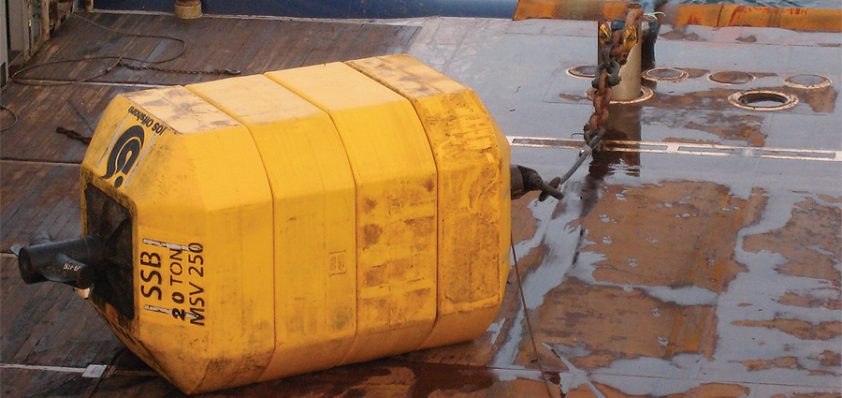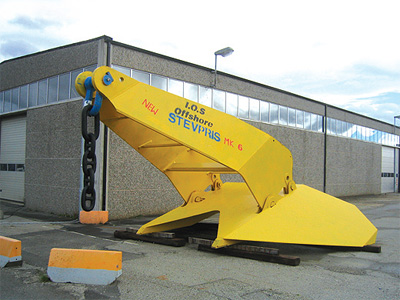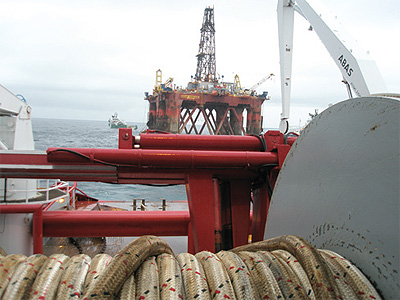
IOS Offshore: Innovating Mooring Solutions for the Global Offshore Industry
Ground-breaking subsea technology
IOS Offshore was established in 1986, and based in Stavanger in Norway, its primary focus is the supply of mooring equipment to offshore drilling operations on the Norwegian coast.
In most cases this involves hire equipment, in which the company has invested considerable funds over the past years. IOS now offers an up-to-date fleet of mooring equipment, which is available to companies carrying out work on the Norwegian coast. Working in partnership with the world’s leading manufacturers within the offshore oil and gas sector, IOS provides complete solutions tailored to the client’s individual needs for rental and/or sale.
 Observing a recent shift in the market with regards to developing better mooring applications in the offshore sector, IOS has been pioneering pre-lay mooring application systems. David Smith, managing director, elaborates: “The benefits of the system include safer mooring installations in all water depths. It doesn’t matter if it is at a depth of 300 or 1500 metres – by prelaying the mooring system, we have developed a safer method of deploying the equipment. It’s also cost-effective, as anchor-handling vessels are used primarily when the rig is moving, which can use as many as four vessels. With a pre-lay mooring application you use only one or two ships to carry out the work, so overall costs are significantly reduced. Another huge benefit is the efficiency of the system. We have observed that this method takes a very short time to move the rig from one location to another. Here we also get a lot of storms in the winter season, and there are certain sea states, which determine the criteria for whether or not you can operate in these conditions. In the winter the window of opportunity is usually quite small, so being able to move the rig efficiently and very quickly is a huge benefit.”
Observing a recent shift in the market with regards to developing better mooring applications in the offshore sector, IOS has been pioneering pre-lay mooring application systems. David Smith, managing director, elaborates: “The benefits of the system include safer mooring installations in all water depths. It doesn’t matter if it is at a depth of 300 or 1500 metres – by prelaying the mooring system, we have developed a safer method of deploying the equipment. It’s also cost-effective, as anchor-handling vessels are used primarily when the rig is moving, which can use as many as four vessels. With a pre-lay mooring application you use only one or two ships to carry out the work, so overall costs are significantly reduced. Another huge benefit is the efficiency of the system. We have observed that this method takes a very short time to move the rig from one location to another. Here we also get a lot of storms in the winter season, and there are certain sea states, which determine the criteria for whether or not you can operate in these conditions. In the winter the window of opportunity is usually quite small, so being able to move the rig efficiently and very quickly is a huge benefit.”
He goes on to describe some new product developments within the business: “We have seen some very interesting concepts come to light in the marketplace. One of these is a smart anchor, which gives the operators feedback as they install it. This includes the depth of penetration of the anchor into the soil, the orientation, the drag distance and the line tension at the anchor point. These are all factors that we currently know very little about, so the fact that this technology would tell the operator exactly what is going on as the anchor penetrates the seabed is truly pioneering, and if it can be transported up to the surface in real time while the anchor is being installed then we will see huge benefits.
“In addition to this, we have seen some new anchor designs. Various locations in the world are using different types of anchors; one concept, called the Torpedo, is being tested down in Brazil, and there’s a company in the US that’s developed an anchor, called Omnimax, which is a very exciting concept for a new anchor style. It involves the anchor being dropped more or less freestyle from about 50 metres above the seabed, and relying on its own weight and force to penetrate the seabed, the anchor goes deep enough into the soil to act as a holding point.”
Following new anchor concepts, the company observes a constant need for better connection equipment, and is showing particular interest in new developments in this area. “We’ve recently seen some new ideas for connectors,” explains David. “One is a new type of kenter shackle, which improves not only the strength, but also ease of assembly of the connector. Another is a thimble/shackle arrangement, which can be used with lightweight fibre ropes. These products have been developed by major European manufacturers and are now merging into the global market. We plan to implement some of these products in the near future to test them out and see how they go.”
IOS has also recently been trialling new methods for retrieving mooring lines and anchors. One such method involves acoustic release subsea buoys, which the company has been testing over the winter months. The test was considered a huge success and IOS is now hoping that the buoy will improve anchor handling systems and avoid the need to use an ROV to pick up mooring lines on the seabed. The concept is expected to be out in the market in late 2009.
seabed. The concept is expected to be out in the market in late 2009.
As IOS Offshore works to expand its product and service offering, the company’s inherent technical expertise remains at the heart of new developments. In line with this, IOS has attended a number of exhibitions in recent months, including the OTC in Houston, Offshore Asia in Bangkok and the DOT exhibition in New Orleans. The company has also attended seminars held by major manufacturers of anchors and anchor chains in the industry, such as Swedish company, Ramnas, as well as Vryhof and Vicinay, two companies that have worked together to establish a seminar programme.
IOS has also held its own informative seminars; David elaborates: “What we have seen in recent years is a need for better understanding of how moorings work, so we have taken some steps to develop and present to our clients technical information on how these products are used. We held a couple of seminars earlier this year to present some of our new and existing products and procedures. We have also taken steps to invest in an animation film for illustrating anchor-handling procedures in a pre-lay mooring application. We have now shown that film several times in seminars and exhibitions, and we have received a very positive reaction from our clients.”
IOS Offshore has certainly seen a number of new developments over the past few months and even as business slows down in the oil and gas market following the global recession, David is positive about the future of the industry and the business itself: “The optimism in the industry is still present, although there’s been a bit of a slowdown. The basic demand for oil and gas products worldwide has not reduced in any way, and so the requirement for providing this type of product will continue to increase. For this reason, as a company we’re confident that the offshore oil and gas industry will remain robust in the time ahead. IOS aims to be at the forefront of pioneering technology in the industry. There are a lot of young people coming into the sector with new ideas, which is very encouraging. We will certainly be pushing forward with the presentation of new products and concepts to our clients domestically in Norway and we are actively looking internationally for opportunities to do the same in other geographic locations across the world.”
IOS Offshore
Services: Mooring equipment